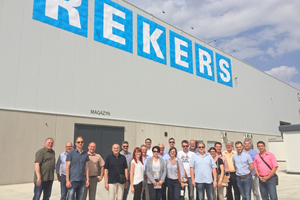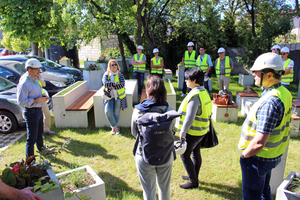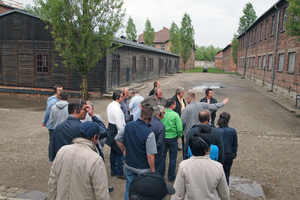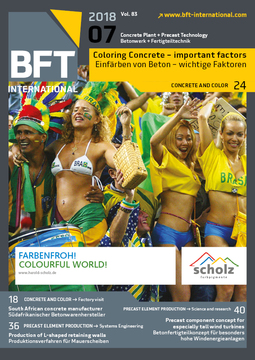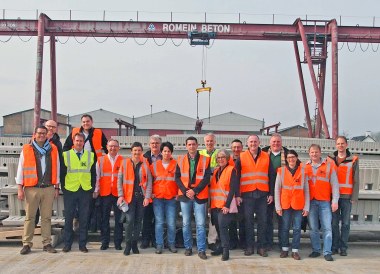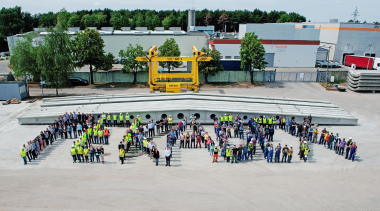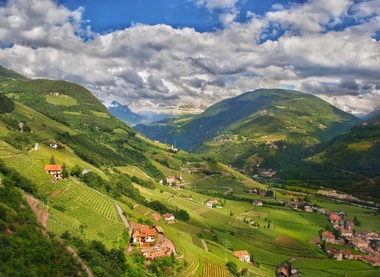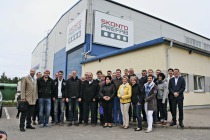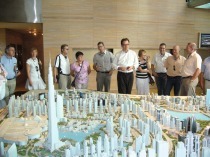This year’s study trip went to Poland
Every two years, Berufsförderungswerk für die Beton- und Fertigteilhersteller (bbf – German Association for the Advancement of Vocational Training for Concrete and Precast Producers) together with Verein ehemaliger Ulmer Meisterschüler organizes a “study trip concrete” to a foreign country. This year, it was time again for 20 participants to take the bus from Berlin to neighboring Poland from May 06 to 10. The tour covered about 1.400 km in total – a considerable distance which however was worthwhile, as the agenda included factory visits at renowned manufacturers and an interesting accompanying program.
Study trip brought 20 participants to Poland
The first stop of the journey was Poznań. Following the city tour in the evening, the group visited Pekabex BET S.A. the next morning. President Christophe Carion guided through the factory in Poznań and offered insights into the production and the company. Pekabex is the leading precast concrete manufacturer in Poland with four locations, a workforce of nearly 1,900 people and a revenue converted into euro of about 118 million. They offer a diverse range of products comprising, among others, precast components made of reinforced concrete and prestressted concrete for industrial, administration and commercial construction, concrete elements for the construction of bridges, tunnels and sports facilities as well as floor slabs and walls for residential construction. BFT International will give a detailed report regarding the precast concrete production at the Pekabex factory in Poznań in the next issue.
After a short stay in Łódź, the today’s cinema city of Poland, a factory tour at Techmatik S.A. in Radom took place at the subsequent day. The company with its workforce of around 500 people has specialized in the production of machines, equipment and molds for the manufacture of concrete blocks. During the guided tour, Sales Manager Damian Madoń presented some product developments such as block making machines and slab machines, various planetary mixers, washing systems, and tumbling systems for surface treatment of concrete products, packaging robots as well as molds for the production of paving blocks and concrete elements. Subsequently, the participants got the opportunity to see the machines in action during the visit at the Jadar Sp. z o.o paving block factory in Grojec.
From Poznań via Łódź and Kraków to Wrocław
Late in the afternoon, the journey continued to Kielce, the headquarters of Fabet S.A. The about 200 employees of the company manufacture almost all sorts of structural precast concrete elements in three-shift operation. The company offers an extremely broad range of products comprising complete noise protection wall systems, precast foundations, beams, columns, girders, wall panels and floor slabs for building construction, bridge elements with wide spans or various structural components for sports stadiums and parking garages. This became also obvious during the guided tour through the large factory building covering 12,000 m².
The culmination of the day was the evening stroll around the bustling medieval market square of the historic city center of Kraków, certainly one of the most beautiful places of Poland.
Also worth visiting, even if for other reasons, is the memorial site of the former German concentration and extermination camp in Oświęcim. Hence, the next morning at 7.30 a.m., the tour group was waiting in front of the gates of this place steeped in history to visit the permanent exhibition at the former main camp and the buildings of the camp in Auschwitz-Birkenau.
Concrete building featuring a dome diameter of 65 m
Then the focus was on professional issues again in the afternoon. The tour group was guest at “Rekers Polska”. The German manufacturer of precast concrete products located in Spelle established a new production site in Olszowa near Gliwice last year. Currently, L-shaped retaining wall elements are exclusively produced at the premises covering an area of 10 hectares in Poland, the production of garages is to start in autumn, too.
The last stop of the study trip was Wrocław. The Centennial Hall of 1913, which was visited, had been the world’s largest self-supporting structure for a long time with a dome diameter of 65 m.

